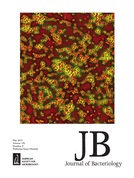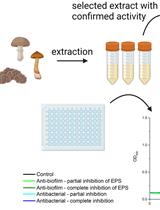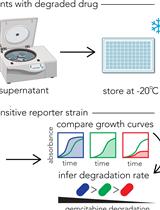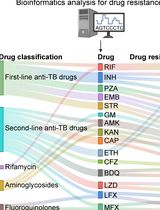- EN - English
- CN - 中文
H2O2 Kill Assays of Biofilm Bacteria
H2O2杀灭生物膜菌的分析
发布: 2013年11月05日第3卷第21期 DOI: 10.21769/BioProtoc.952 浏览次数: 11636
评审: Anonymous reviewer(s)
Abstract
Ubiquitous in nature and often surface associated, biofilms cause numerous chronic human infections. Biofilms are structured multicellular bacterial communities where cells are entrapped in a polymer matrix. Bacteria growing as biofilms are characterized by marked tolerance to many biocides, including oxidants such as hydrogen peroxide. Hydrogen peroxide is both produced by host phagocytic cells, and used as an antimicrobial compound. Understanding biofilm tolerance to hydrogen peroxide is therefore relevant to the persistence of Pseudomonas aeruginosa in human infections (such as chronic Pseudomonas aeruginosa infections in cystic fibrosis airways) as well as in environmental settings (such as water pipes).
This protocol was developed to determine the tolerance of Pseudomonas aeruginosa biofilms to hydrogen peroxide (H2O2) killing. The bacteria are grown as colony biofilms on polycarbonate membranes, as previously described in Walters et al. 2003. The protocol may be adapted for other bacterial, with appropriate changes in H2O2 concentrations, since different bacterial species may be more or less susceptible to H2O2 than Pseudomonas aeruginosa.
Materials and Reagents
- Phosphate buffered saline (PBS) solution (Sigma-Aldrich, catalog number: P4417-100TAB )
- 30% w/w Hydrogen peroxide solution (undiluted, as sold commercially) (RICCA Chemical, catalog number: 3821.7-32 )
- Sodium thiosulfate solution (dissolved in ddH2O) (Sigma-Aldrich, catalog number: S8503 )
- 0.2 μM Polycarbonate 25 mm membranes (General Electric Company, catalog number: K02BP02500 )
- P.aeruginosa strains in freezer stock
- 25% Lennox broth (LB) medium (Becton Dickinson and Company, DifcoTM, catalog number: 240230 ) (see Recipes)
- 25% LB agar plates (see Recipes)
Equipment
- 6-well and 96-well plates
- Standard petri plates
- Spectrophotometer (cuvette) (Thermo Fisher Scientific, model: GENESYS 10S UV-Vis )
- Spectrophotometer (96-well plate) (Bio-Rad, model: 680 )
- Cuvettes for OD600 reading
- Shaking incubator at 37 °C, 250 rpm
- Static incubator at 37 °C
- Sterile glassware: 150 ml Erlenmeyer flasks, capped or foiled
- 1.5 ml and 2 ml microcentrifuge tubes
- Source of UV irradiation
- Sterile wire-loops (sterilized with 70% ethanol and flame)
- Stainless steel forceps (sterilized with 70% ethanol and flame)
Procedure
文章信息
版权信息
© 2013 The Authors; exclusive licensee Bio-protocol LLC.
如何引用
Khakimova, M. and Nguyen, D. (2013). H2O2 Kill Assays of Biofilm Bacteria. Bio-protocol 3(21): e952. DOI: 10.21769/BioProtoc.952.
分类
微生物学 > 微生物生物膜 > 杀伤试验
生物化学 > 其它化合物 > 活性氧
微生物学 > 抗微生物试验 > 抗细菌试验
您对这篇实验方法有问题吗?
在此处发布您的问题,我们将邀请本文作者来回答。同时,我们会将您的问题发布到Bio-protocol Exchange,以便寻求社区成员的帮助。
Share
Bluesky
X
Copy link













